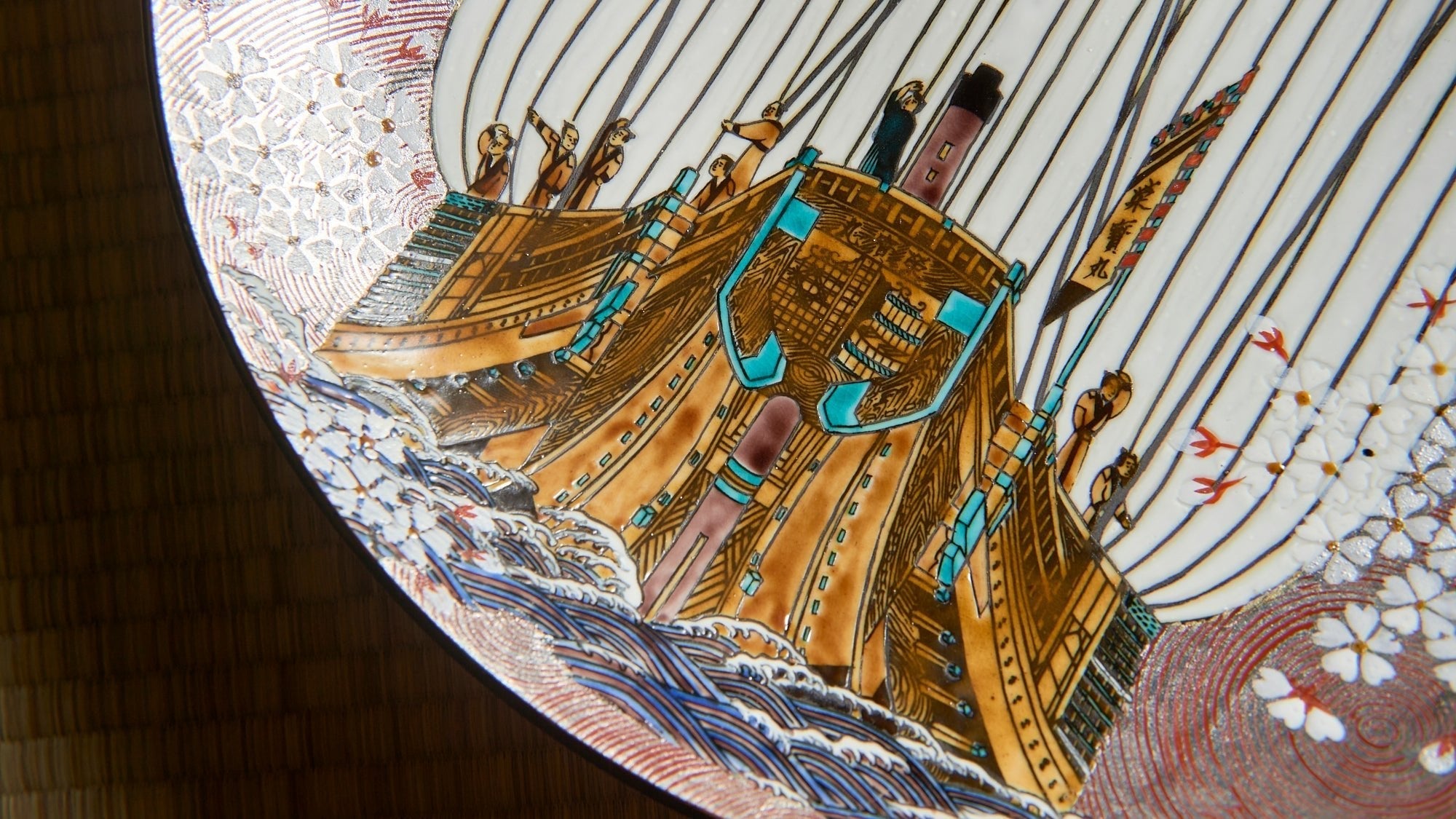
Voyages of Prosperity: The Kitamaebune Unveiled
Written by Team MUSUBI
Woven with tales of samurai, geisha, and the flourishing culture of the Edo period (1603 CE–1868 CE), Japanese history is also marked by the unique and adventurous narrative of the kitamaebune—northern-bound ships that once sailed the Sea of Japan. This fleet of merchant vessels, active from the mid-18th century to the early 20th century, was a dynamic lifeblood connecting Osaka and Hokkaido, creating a rich heritage of commerce, culture, and collective memory.
Kitamura Takashi delves deeply into the fascinating story of the kitamaebune, infusing his Kutani ware pieces with the essence of these historic vessels. His artistic pursuit goes beyond merely painting pictures of the kitamaebune; he aims to capture the spirit and profound cultural significance these ships hold within Japanese history.
Let us introduce you to the allure of the kitamaebune that captivated Kitamura.
Table of Contents
Sails of Fortune

The kitamaebune were not ordinary ships. They were a moving market, a symbol of economic vitality, trading goods while navigating the perilous waters between Osaka and Hokkaido. This was a time when dreams of wealth could be realized through bravery, wit, and the spirit of adventure, making the kitamaebune a beacon of hope and ambition for the common folk. These ships were a marvel of their era, embodying the entrepreneurial spirit of the Edo period.
As they traversed the Sea of Japan, the kitamaebune carried an assortment of goods—rice from the fields of Osaka, the coveted kombu (kelp) from Hokkaido, sake barrels, and much more. It was a sophisticated operation where captains, known as sendo, engaged in strategic buying and selling across ports, turning each voyage into a potential fortune.
These ships acted as conduits of culture, connecting regions and spreading traditions, culinary practices, and folk songs throughout Japan. Their voyages continue to influence the diverse cultural expressions found today, from the flavors of Japanese cuisine to the melodies of local songs.
The Spirit of the Sailors

As much as the kitamaebune were about commerce, they were also about community. The life of those who worked aboard these ships was one of rigorous discipline, teamwork, and shared destiny. From the captain to the lowliest deckhand, each crew member played a vital role in the ship's journey. Their stories, filled with challenges, triumphs, and tragedies, add a human dimension to the saga of the kitamaebune, making it a captivating chapter in Japan's maritime history.
Railways and steamships gradually took over the routes once plied by these graceful sailing ships, leading to their decline. Yet, the spirit of the kitamaebune—marked by resilience, innovation, and the pursuit of prosperity—continues to inspire.
An Artist Enchanted by the Kitamaebune

The Heritage and Legacy of the Kitamaebune

Today, the legacy of the kitamaebune lives on, not just in museums, historical sites, and scholarly works, but in the hearts of those who cherish the adventurous spirit and cultural richness of Japan's past. For travelers and history enthusiasts alike, the story of the kitamaebune offers a fascinating voyage into the heart of Japan's maritime heritage. This journey reveals the strength, ingenuity, and spirit of the people who navigated the treacherous waters of the Sea of Japan in pursuit of their dreams and destiny.







Leave a comment
This site is protected by hCaptcha and the hCaptcha Privacy Policy and Terms of Service apply.